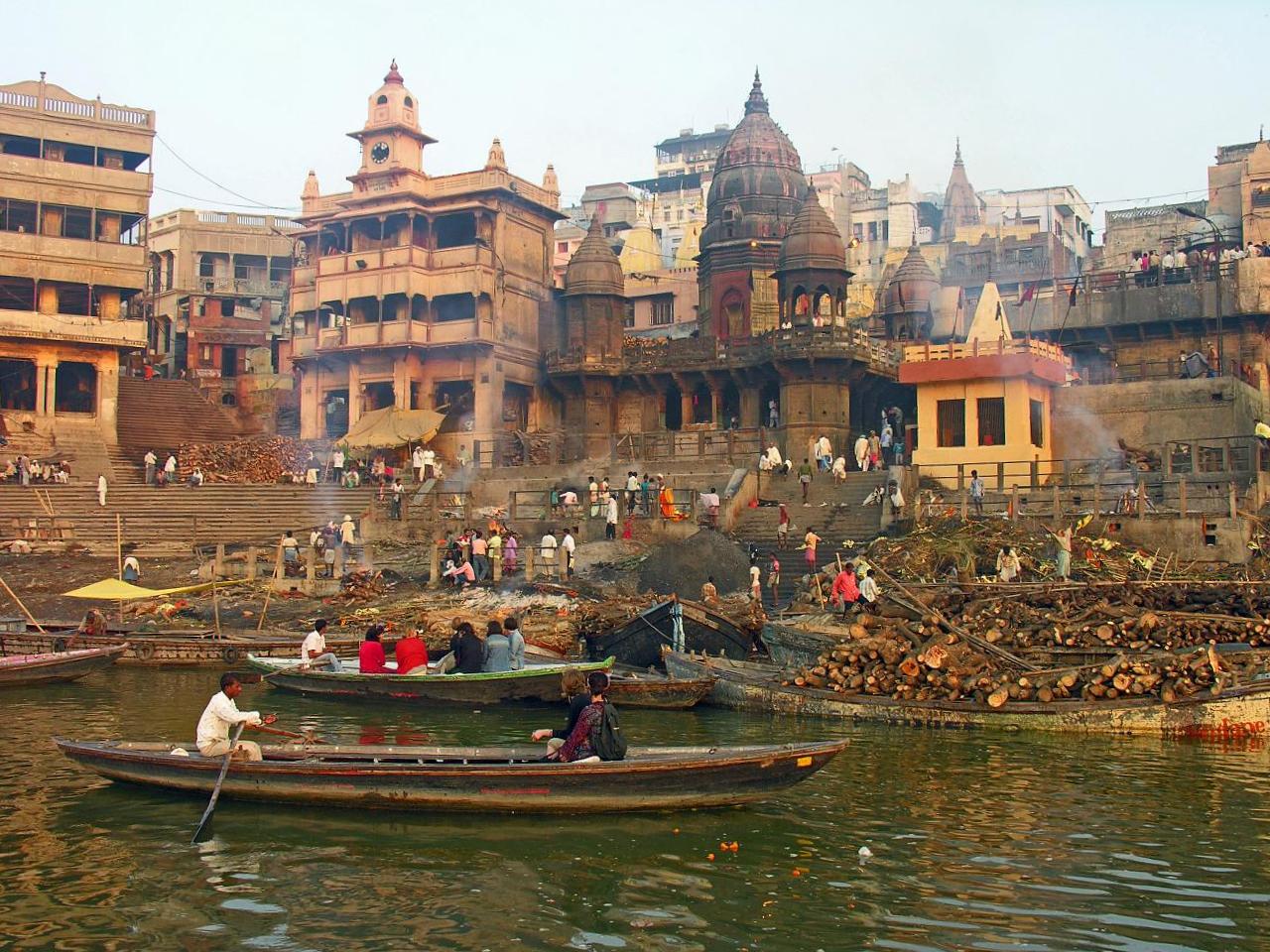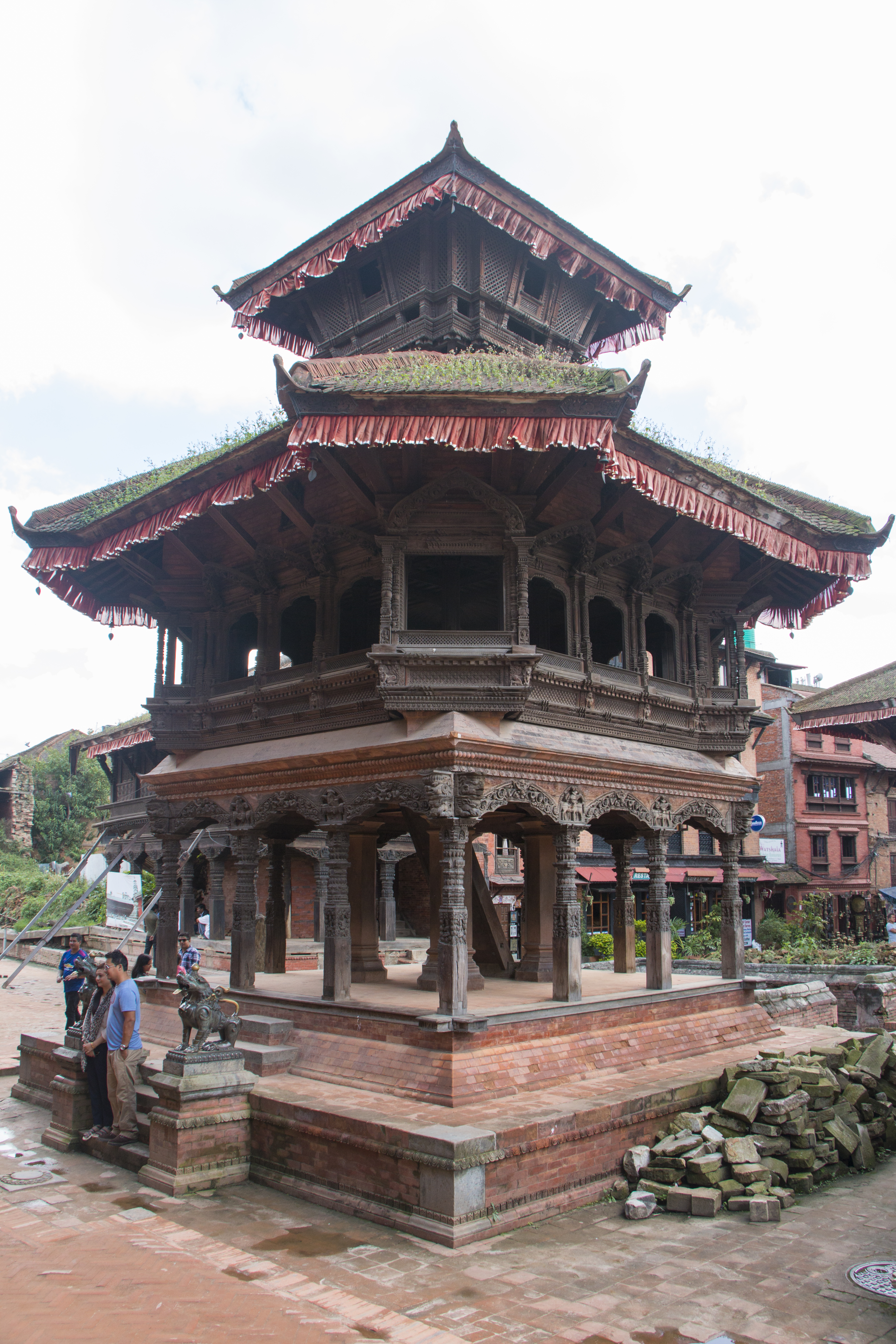|
Nepali Mandir
Shri Samrajeswar Pashupatinath Mahadev Mandir, also known as the Nepali Mandir ( hi, नेपाली मंदिर), Kanthwala Mandir and Mini Khajuraho (Kanthwala in Hindi means ''wooden''), is one of the oldest and most famous temples in the holy city of Varanasi. This temple has great religious importance in Hinduism and is dedicated to the Lord Shiva. Constructed in the 19th century A.D by the King of Nepal, the temple is made of terracotta, stone and wood and is replica of the Pashupatinath Temple in Kathmandu. History The King of Nepal, Rana Bahadur Shah took exile in Varanasi from 1800 to 1804 and titled himself as "Swami Nirgunanda". During his exile, he decided to build a replica of Pashupatinath Temple in Varanasi. Construction of the temple commenced during his exile / stay in Varanasi. During the construction, Shah moved back to Nepal. On 25 April 1806, Rana Bahadur Shah was stabbed to death by his stepbrother, Sher Bahadur Shah. His son Girvan Yuddha Bikram ... [...More Info...] [...Related Items...] OR: [Wikipedia] [Google] [Baidu] |
Varanasi District
Varanasi district is a district in the north Indian state of Uttar Pradesh, with Varanasi city as the district headquarters. It is surrounded by Mirzapur district, Jaunpur district, Ghazipur district, Chandauli district, and Bhadohi district. The Ganga (Ganges) river flows through the district. Part of the Varanasi division, the district occupies an area of and Census of India, it had a population of 3,676,841. Divisions The district is made up of four tehsils: Varanasi, Pindra, Ramnagr, and Rajatalab, and eight Vidhan Sabha (Legislative Assembly) constituencies: Pindra, Shivpur, Rohaniya, Varanasi North, Varanasi South, Varanasi Cantt., Sevapuri, and Ajagara. Demographics According to the 2011 census, Varanasi district has a population of 3,676,841, This gives it a ranking of 75th in India (out of a total of 640). The district has a population density of . Its population growth rate over the decade 2001-2011 was 17.32%. Varanasi has a sex ratio of 909 fe ... [...More Info...] [...Related Items...] OR: [Wikipedia] [Google] [Baidu] |
Hindu Temples In Varanasi
Varanasi is an ancient city in India famous for housing many Hindu temples. The city's ancient holiness makes it a sacred geography in Hinduism. The city's temples were erected at different times throughout the history of Varanasi by various kings, saints, monasteries, guilds and communities. The city is one of the largest collection of historic and newly built Hindu temples. Varanasi is an ancient city with deep spiritual roots and significance for the Hindus and it reflects this heritage in over a thousand temples. Varanasi, also known as Benares, Banaras (''Banāras''), or Kashi (''Kāśī''), is the holiest of the seven sacred cities (''Sapta Puri'') in Hinduism and Jainism, and played an important role in the development of Buddhism. It is one of the oldest continuously inhabited cities in the world. Varanasi is also known as the favourite city of the Hindu deity Lord Shiva. Some historic Hindu temples in Varanasi were demolished and mosques built in their place after th ... [...More Info...] [...Related Items...] OR: [Wikipedia] [Google] [Baidu] |
Manikarnika Ghat
Manikarnika Ghat (Hindi: मणिकर्णिका घाट) is one of the holiest cremation grounds among the sacred riverfronts (ghats), alongside the river Ganges, in the city of Varanasi in the Indian state of Uttar Pradesh. In Hinduism, death is considered a gateway to another life marked by the result of one's karma. It is believed that a human's soul attains moksha, and hence breaks the cycle of rebirth when cremated here. Thus, scores of the elderly across the whole country seek to walk up to its edges, and spend their last days absorbing the charisma of the ghat making death painless and insignificant to be pondered upon. The ghat is named after Sati's earrings which fell here. The Hindu genealogy registers at Varanasi are kept here. Location The Manikarnika Ghat is flanked by the Dashashwamedh Ghat and the Scindia Ghat. It is situated in Varanasi, Kashi region, India. Mythological origin The Manikarnika Ghat is one of the oldest ghats in Varanasi. It is ... [...More Info...] [...Related Items...] OR: [Wikipedia] [Google] [Baidu] |
Varanasi Junction Railway Station
Varanasi Junction railway station (station code: BSB), also known as Varanasi Cantt railway station, is the main railway station serving the city of Varanasi. The other key railway stations in Varanasi Metro area are (formerly Manduadih), , Pt. Deen Dayal Upadhyay Jn. (Formerly Mughalsarai) and . The junction station is sandwiched between the cantonment region and Chetganj region of the city. The station is partially controlled by the Lucknow Division of the Northern Railway Zone and the Varanasi Division of the North Eastern Railway Zone of the Indian Railways. Varanasi Junction railway station nearly reaches the frequency of 300 trains daily. Almost, 45 trains originate and terminate at the station. Premium trains of Indian Railways also originate from Varanasi Junction, such as Vande Bharat Express and Mahamana Express History The first line to the temple town was opened from Howrah in 1862. The Chief Engineer of East Indian Railway Company, George Turnbull directed and bu ... [...More Info...] [...Related Items...] OR: [Wikipedia] [Google] [Baidu] |
Khajuraho Group Of Monuments
The Khajuraho Group of Monuments are a group of Hindu and Jain temples in Chhatarpur district, Madhya Pradesh, India, about 175 kilometres southeast of Jhansi. They are a UNESCO World Heritage Site. The temples are famous for their nagara-style architectural symbolism and a few erotic sculptures. Most Khajuraho temples were built between 885 AD and 1000 AD by the Chandela dynasty. Historical records note that the Khajuraho temple site had 85 temples by the 12th century, spread over 20 square kilometers. Of these, only about 25 temples have survived, spread over six square kilometers.Khajuraho Group of Monuments UNESCO World Heritage Site Of the surviving temples, the Kandariya Mahadeva Temple is decorated with a profu ... [...More Info...] [...Related Items...] OR: [Wikipedia] [Google] [Baidu] |
Sculpture
Sculpture is the branch of the visual arts that operates in three dimensions. Sculpture is the three-dimensional art work which is physically presented in the dimensions of height, width and depth. It is one of the plastic arts. Durable sculptural processes originally used carving (the removal of material) and modelling (the addition of material, as clay), in stone, metal, ceramics, wood and other materials but, since Modernism, there has been an almost complete freedom of materials and process. A wide variety of materials may be worked by removal such as carving, assembled by welding or modelling, or moulded or cast. Sculpture in stone survives far better than works of art in perishable materials, and often represents the majority of the surviving works (other than pottery) from ancient cultures, though conversely traditions of sculpture in wood may have vanished almost entirely. However, most ancient sculpture was brightly painted, and this has been lost. [...More Info...] [...Related Items...] OR: [Wikipedia] [Google] [Baidu] |
Ficus Religiosa
''Ficus religiosa'' or sacred fig is a species of fig native to the Indian subcontinent and Indochina that belongs to Moraceae, the fig or mulberry family. It is also known as the bodhi tree, pippala tree, peepul tree, peepal tree, pipal tree, or ashvattha tree (in India and Nepal). The sacred fig is considered to have a religious significance in three major religions that originated on the Indian subcontinent, Hinduism, Buddhism and Jainism. Hindu and Jain ascetics consider the species to be sacred and often meditate under it. This is the tree under which Gautama Buddha is believed to have attained enlightenment. The sacred fig is the state tree of the Indian states of Odisha, Bihar and Haryana. Description ''Ficus religiosa'' is a large dry season-deciduous or semi-evergreen tree up to tall and with a trunk diameter of up to . The leaves are cordate in shape with a distinctive extended drip tip; they are long and broad, with a petiole. The fruits are small figs in d ... [...More Info...] [...Related Items...] OR: [Wikipedia] [Google] [Baidu] |
Tamarind
Tamarind (''Tamarindus indica'') is a leguminous tree bearing edible fruit that is probably indigenous to tropical Africa. The genus ''Tamarindus'' is monotypic, meaning that it contains only this species. It belongs to the family Fabaceae. The tamarind tree produces brown, pod-like fruits that contain a sweet, tangy pulp, which is used in cuisines around the world. The pulp is also used in traditional medicine and as a metal polish. The tree's wood can be used for woodworking and tamarind seed oil can be extracted from the seeds. Tamarind's tender young leaves are used in Indian and Filipino cuisine. Because tamarind has multiple uses, it is cultivated around the world in tropical and subtropical zones. Description The tamarind is a long-lived, medium-growth tree, which attains a maximum crown height of . The crown has an irregular, vase-shaped outline of dense foliage. The tree grows well in full sun. It prefers clay, loam, sandy, and acidic soil types, ... [...More Info...] [...Related Items...] OR: [Wikipedia] [Google] [Baidu] |
Termite
Termites are small insects that live in colonies and have distinct castes (eusocial) and feed on wood or other dead plant matter. Termites comprise the infraorder Isoptera, or alternatively the epifamily Termitoidae, within the order Blattodea (along with cockroaches). Termites were once classified in a separate order from cockroaches, but recent phylogenetic studies indicate that they evolved from cockroaches, as they are deeply nested within the group, and the sister group to wood eating cockroaches of the genus ''Cryptocercus''. Previous estimates suggested the divergence took place during the Jurassic or Triassic. More recent estimates suggest that they have an origin during the Late Jurassic, with the first fossil records in the Early Cretaceous. About 3,106 species are currently described, with a few hundred more left to be described. Although these insects are often called "white ants", they are not ants, and are not closely related to ants. Like ants and some bee ... [...More Info...] [...Related Items...] OR: [Wikipedia] [Google] [Baidu] |
Dharamshala (type Of Building)
A dharamshala, also written as dharmashala is a public resthouse or shelter in the Indian subcontinent. Just as sarai are for travellers and caravans, dharamshalas are built for religious travellers at pilgrimage sites. In Nepal there are dharamshalas especially built for pilgrims as well as dharamshalas for locals. Etymology ''Dharamshala'' (Devanagari: धर्मशाला; ITRANS: Dharmashaalaa; IAST: Dharmaśālā) is a word (derived from Sanskrit) that is a compound of '' dharma'' (धर्म) and ''shālā'' (शाला). A loose translation into English would be 'spiritual dwelling' or, more loosely, 'sanctuary'. Rendering a precise literal translation into English is problematic due to the vast and conceptually rich semantic field of the word '' dharma'', and the cultural aspect of India. In common Hindu usage, the word ''dharamshala'' refers to a shelter or rest house for spiritual pilgrims. Traditionally, such ''dharamshalas'' (pilgrims' rest houses) were co ... [...More Info...] [...Related Items...] OR: [Wikipedia] [Google] [Baidu] |

_-_1922.jpg)





